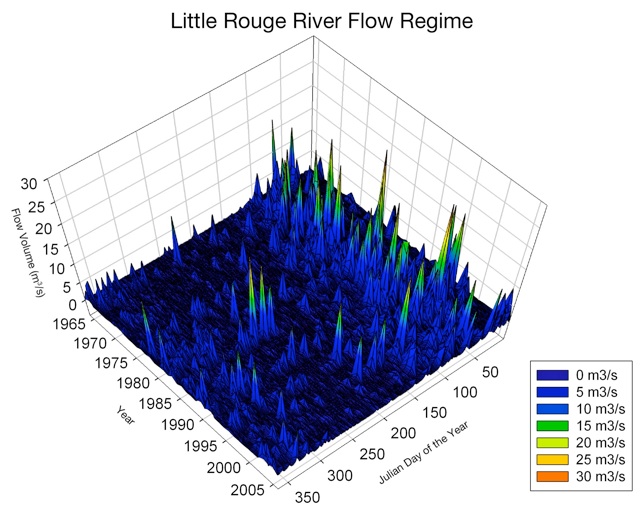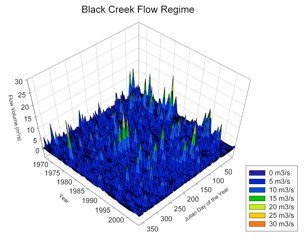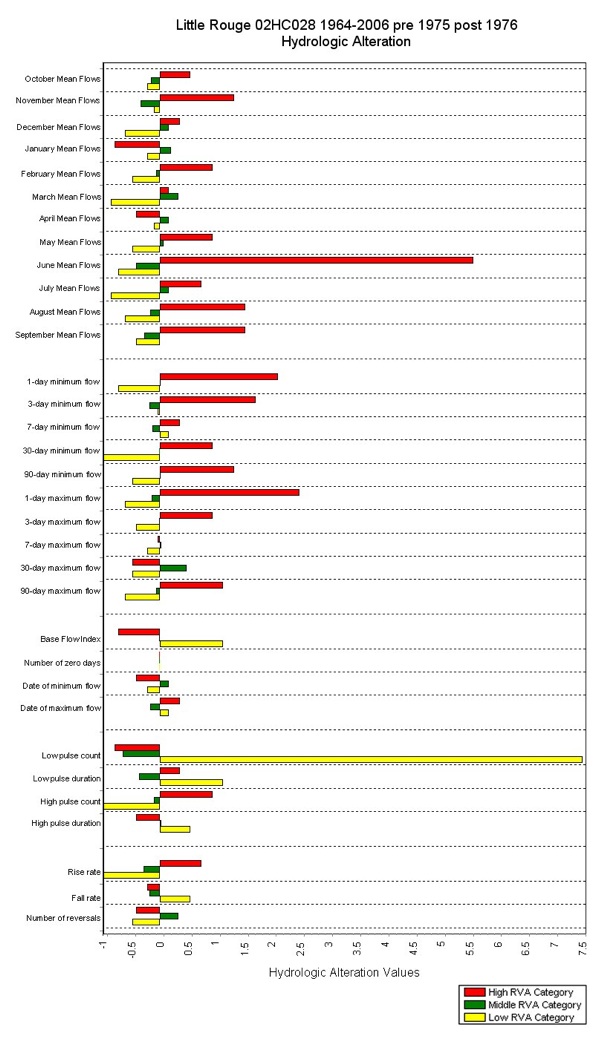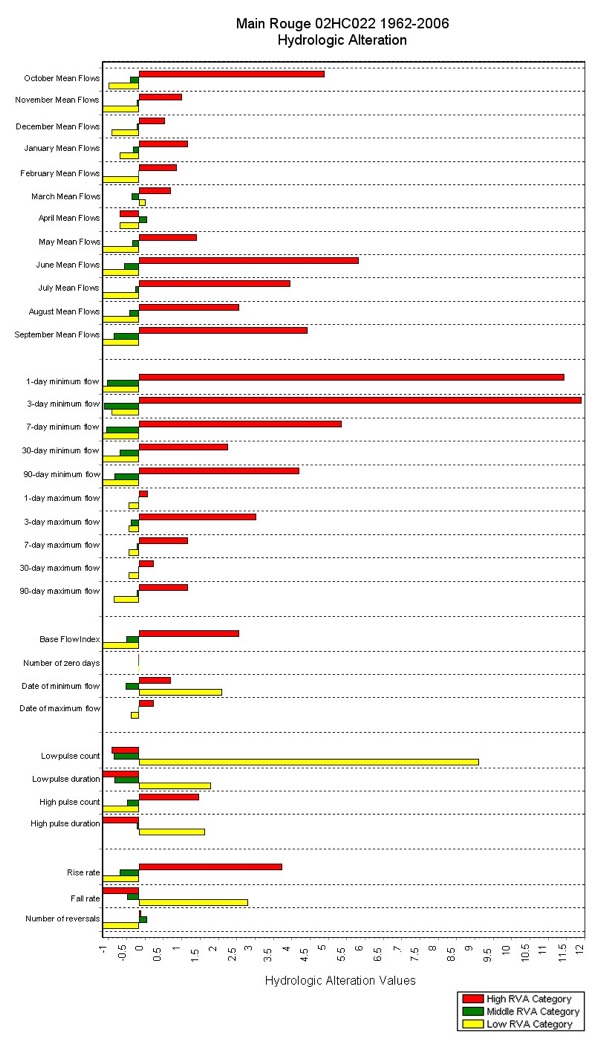Flow Regime
“Water is the driver of Nature.” — Leonardo daVinci
The Rouge River and its tributaries offer a vast array of habitats to plants, animals, invertebrates, and even microbial life. Not only are these organisms important to our local ecosystems but they also provide critical ecological services that benefit human communities more generally (i.e. water purification, flood control), many of which are not visually apparent, and therefore typically undervalued.
Healthy aquatic ecosystems maintain a "dynamic equilibrium”. It is important to understand that when this "dynamic equilibrium" is upset, rapid changes in the aquatic ecosystem can occur. Rivers and streams and their related ecosystems have adapted to their environmental condition over thousands of years, a “climax community”, and cannot respond at the same rate as changes that take place on the landscape. The result is an ecosystem unable to adjust its physical processes fast enough to accommodate what is deemed to be a healthy aquatic ecosystem. The connection between changes in the aquatic ecosystem and what happens more broadly on the landscape may not be overtly obvious, but the connection is water itself.
What is Changing?
A natural flow regime, which is dynamic, has strong influences on the many physiochemical processes in watercourses, which work together to create diverse aquatic habitats. The flow regime is composed of both surface water and groundwater flow and is characterized by the volume of water passing a given point over time. The components of flow regime include magnitude, frequency, duration, timing (seasonality), and rate of change (flashiness) in flows; all play a direct or indirect role in maintaining the ecological integrity of the aquatic system. To illustrate this, the figures below show the Rouge River’s flow regime, both for the main Rouge River and the Little Rouge River. A graph of a highly altered flow regime, Black Creek, an urbanized stream in the Humber River watershed, is also illustrated below. The three graphs collectively illustrate the difference between three flow conditions with the Black Creek being the most highly altered,
the main Rouge River showing signs of significant alteration, and the Little Rouge River showing very limited signs of
flow alteration.









